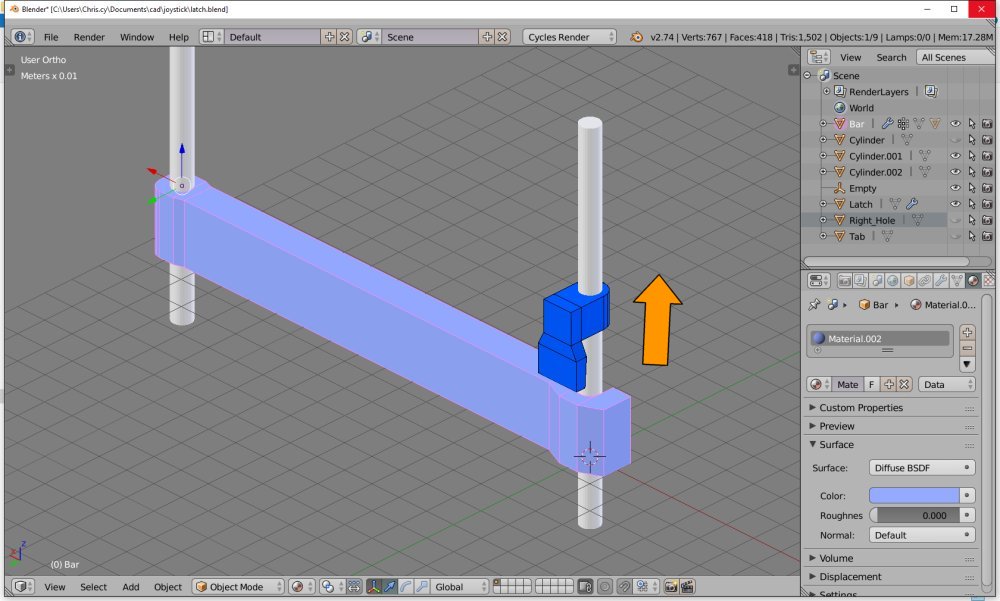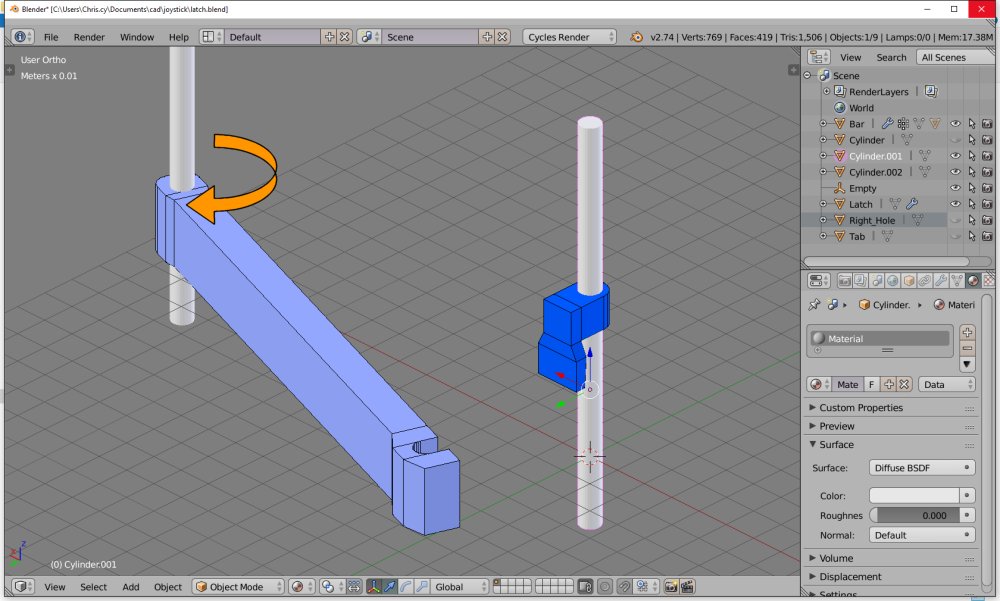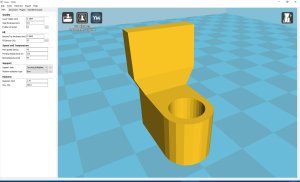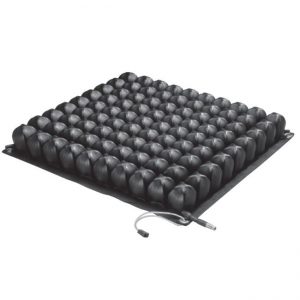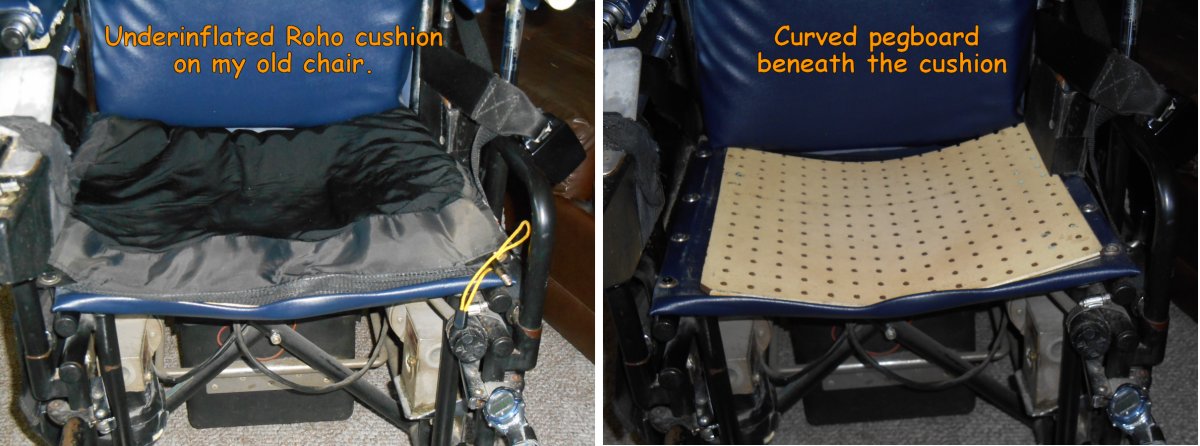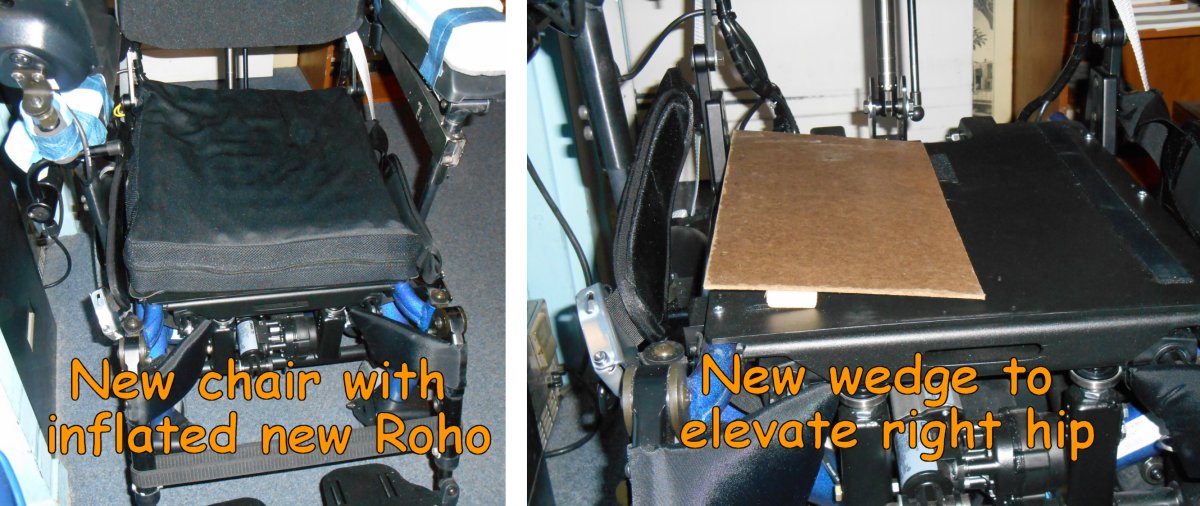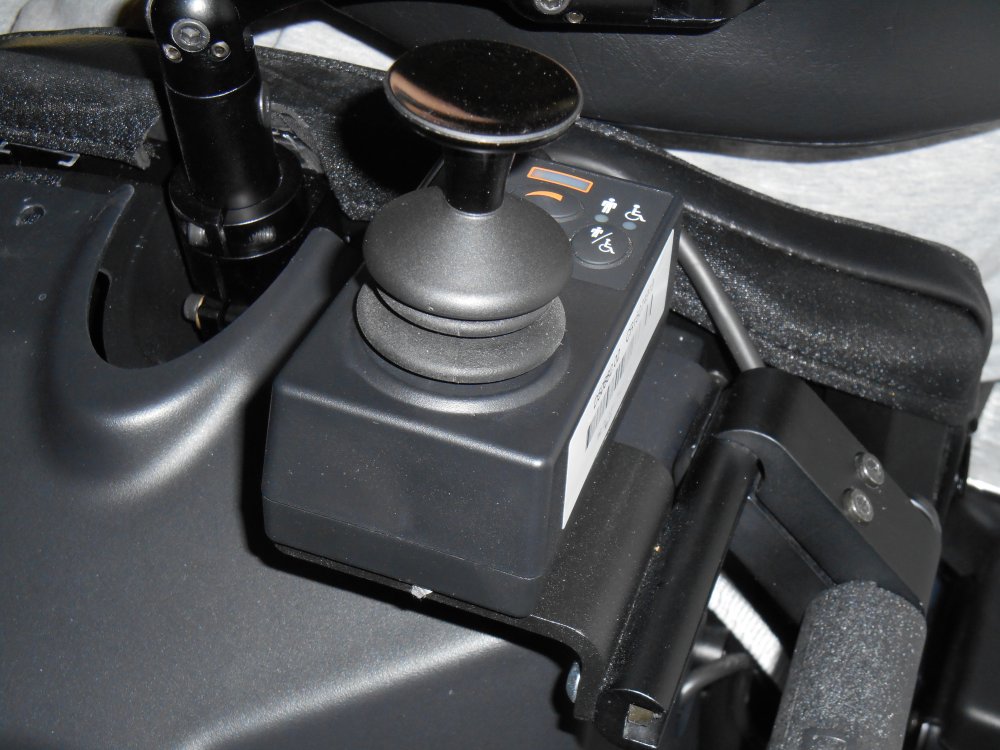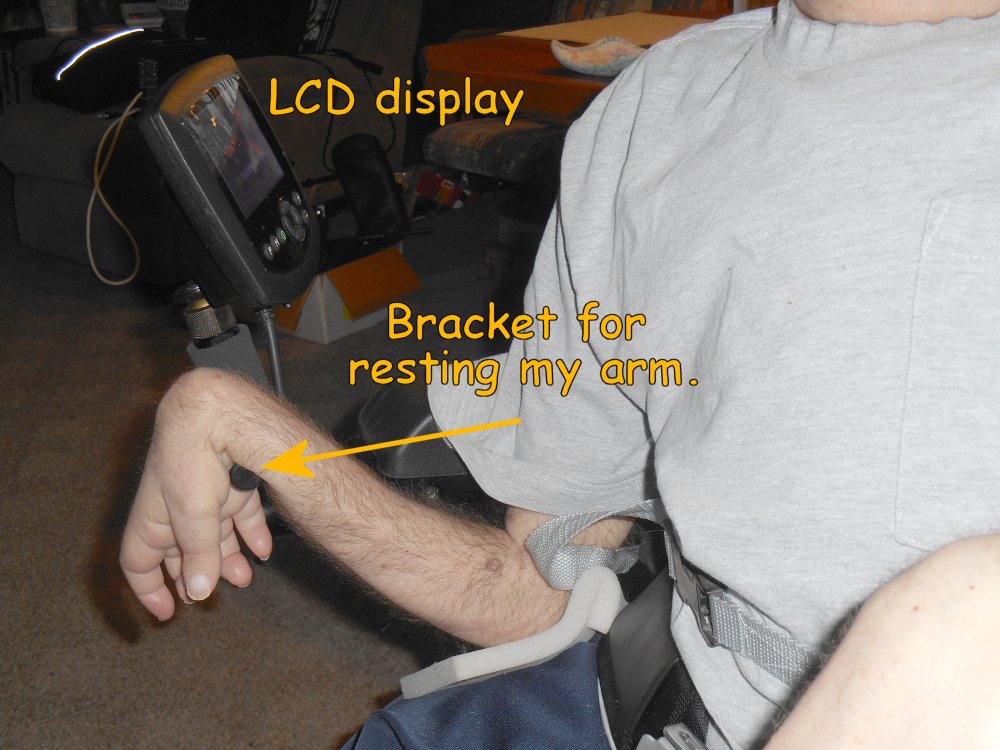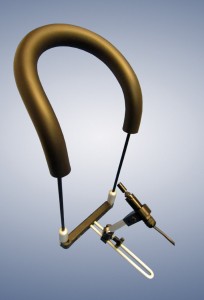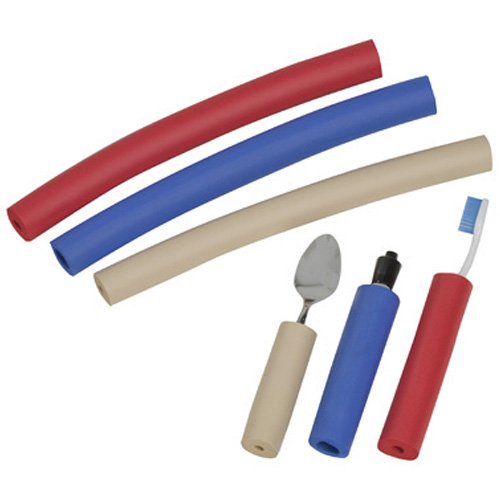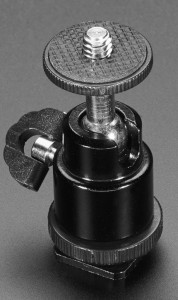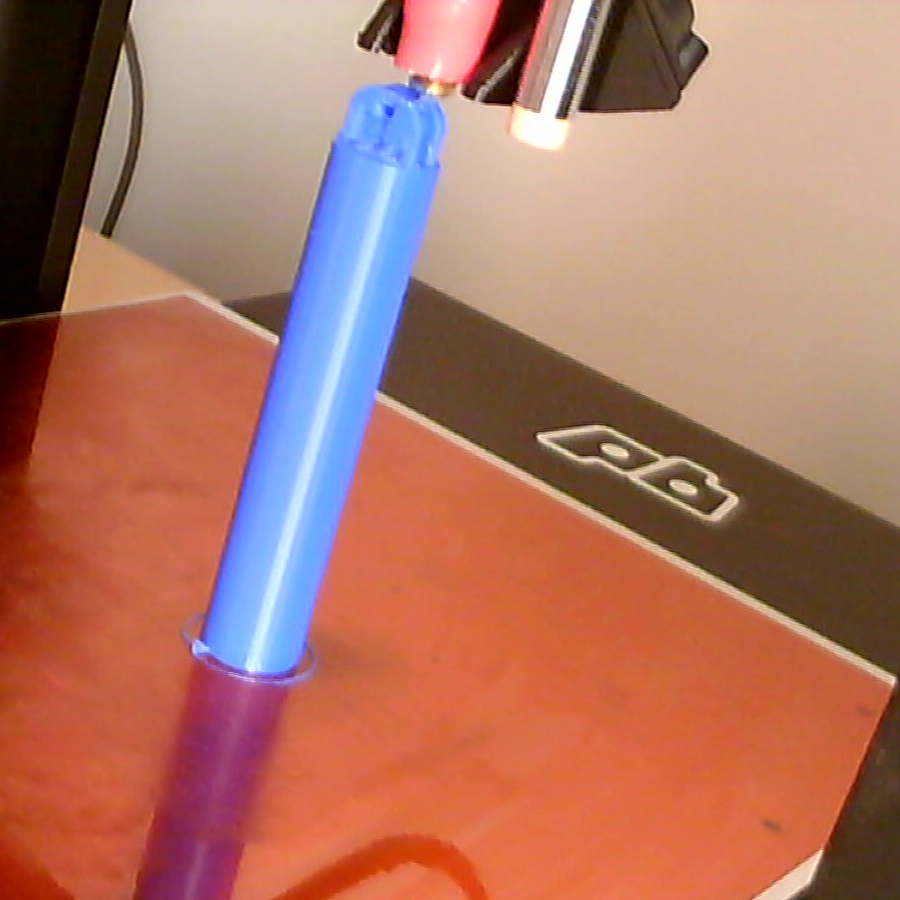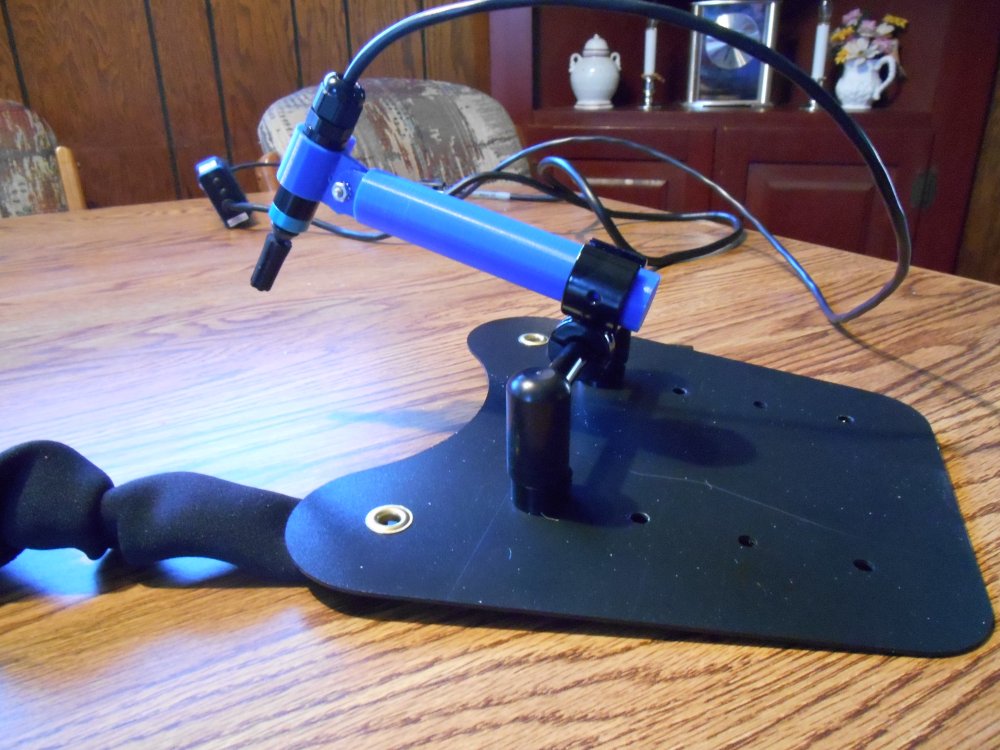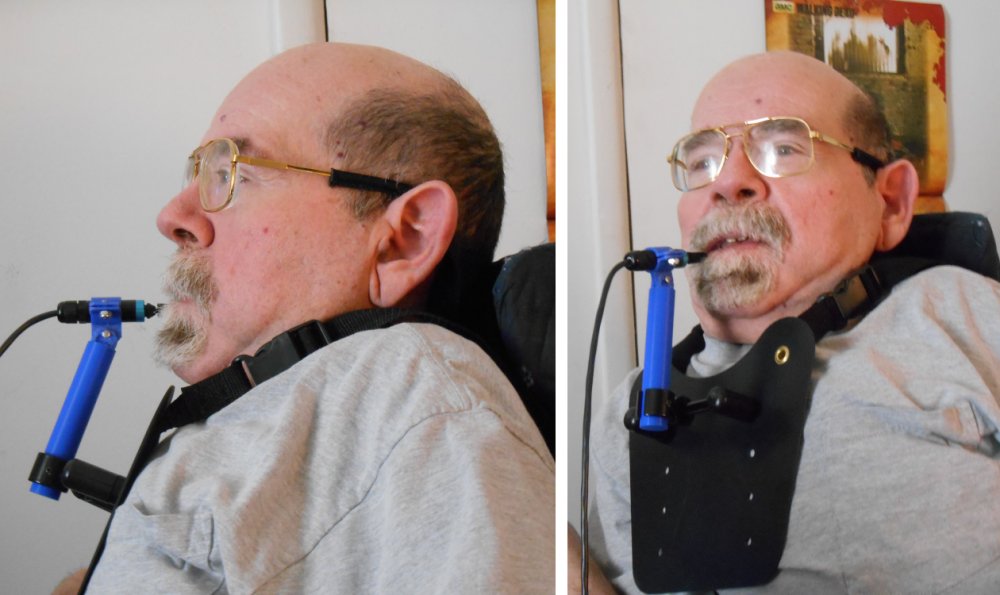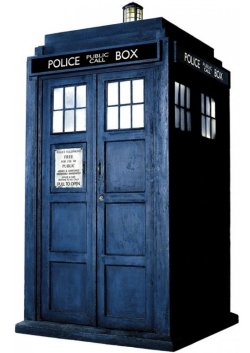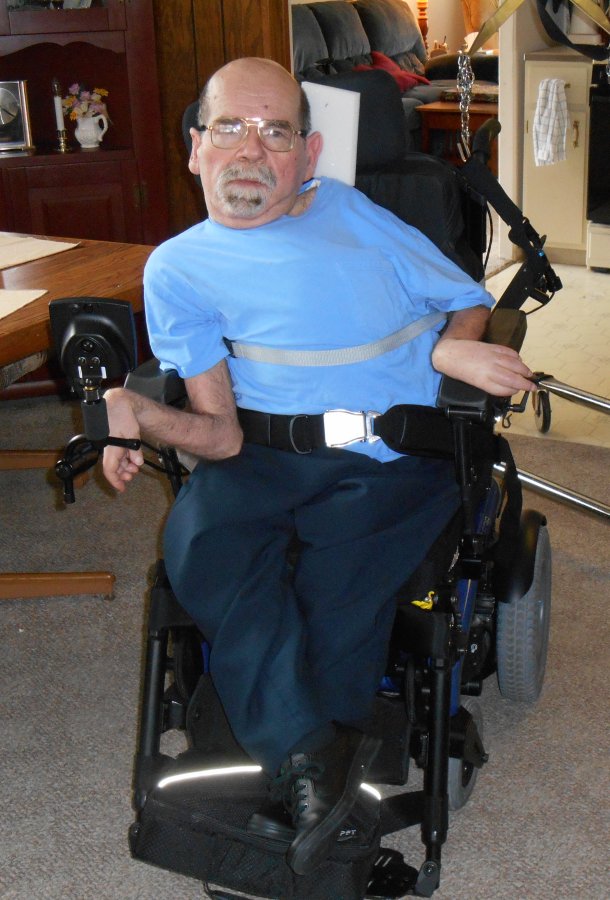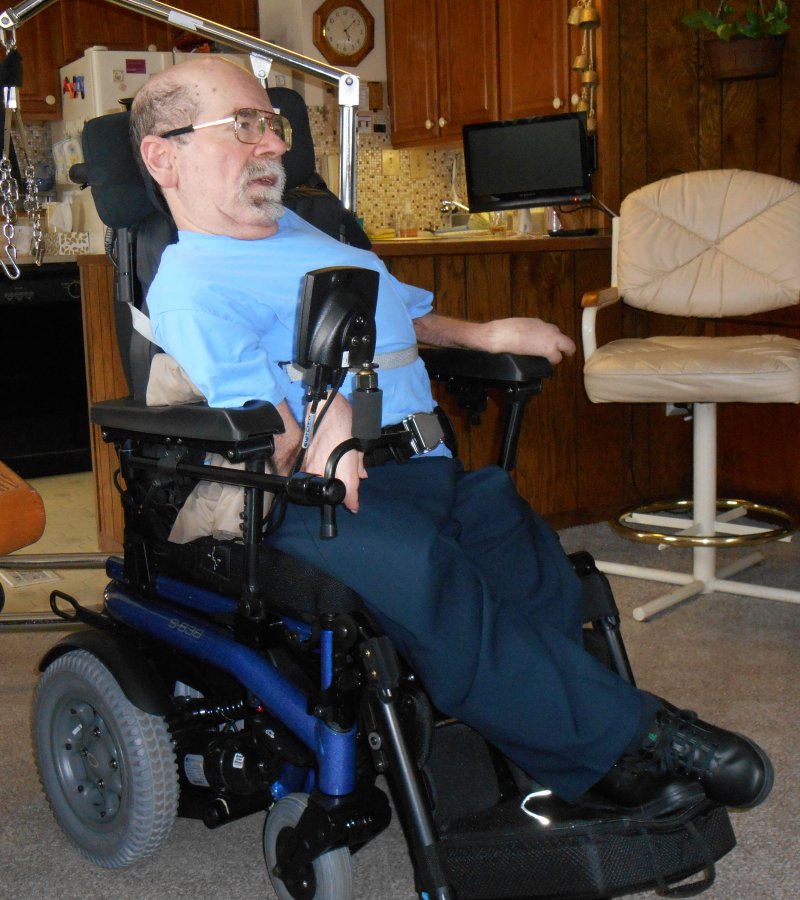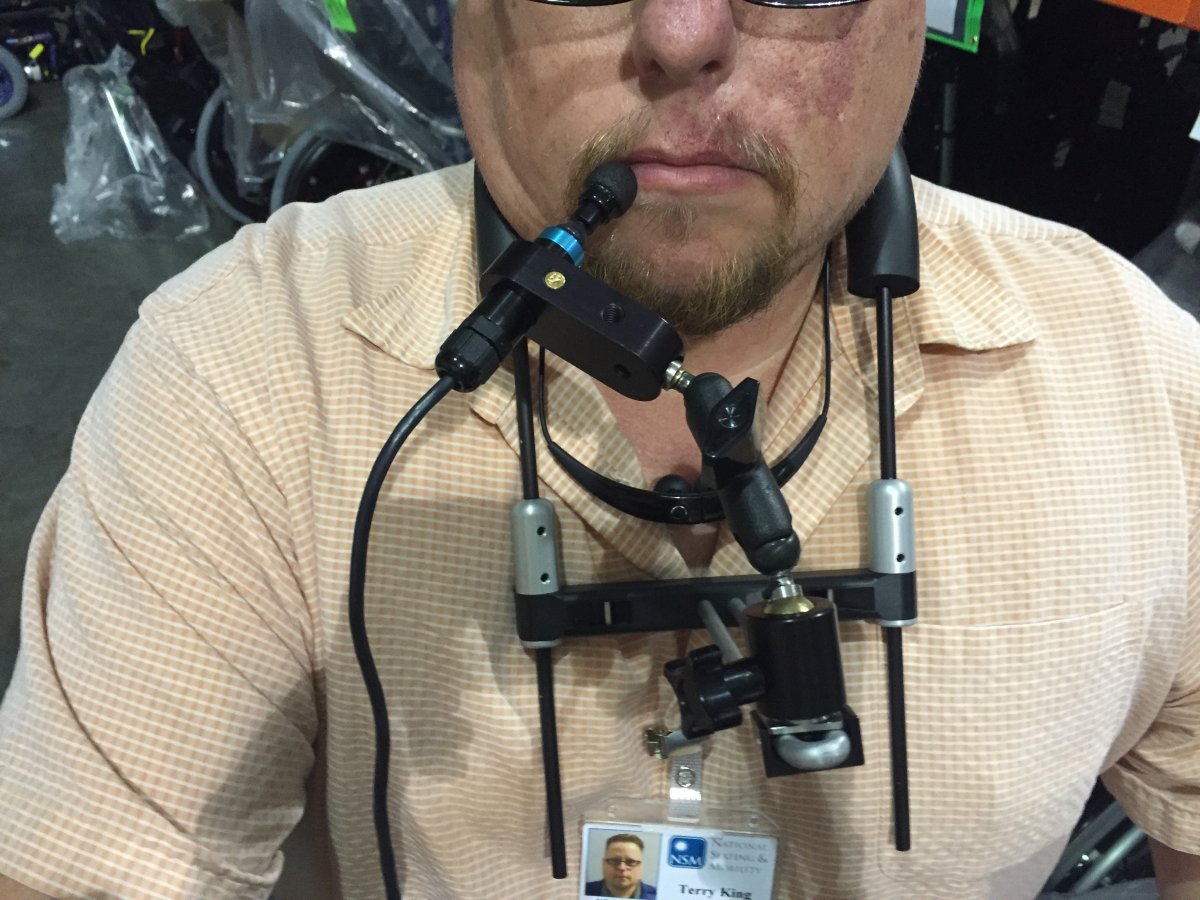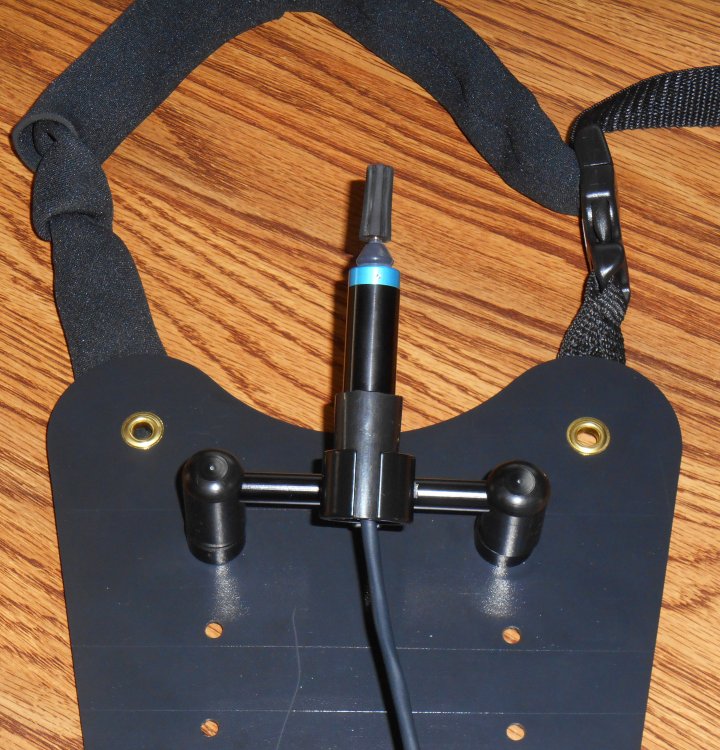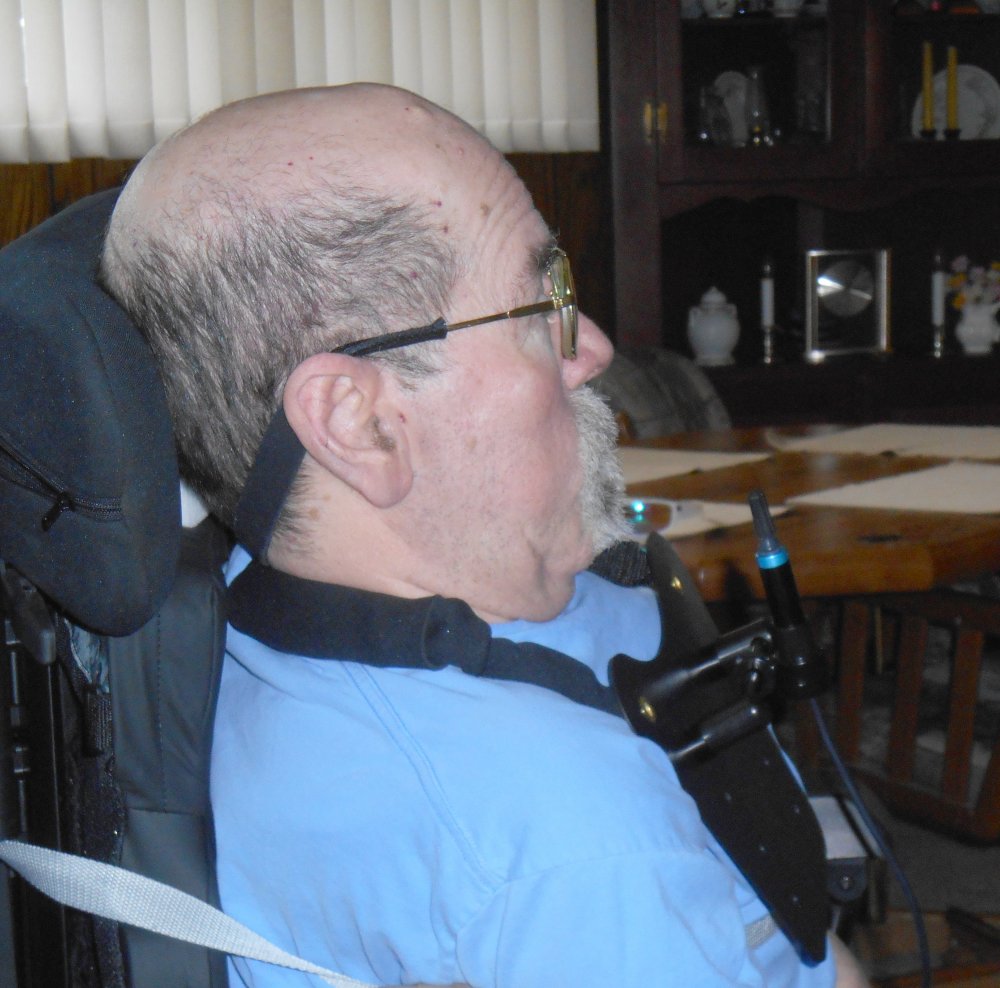In this installment, I cover the fourth week of working on my new wheelchair. We will solve one problem and immediately create another one.
Free at Last
Our story is now up to Monday April 18, 2016 exactly 3 weeks since my new wheelchair has arrived and I still haven’t been able to drive it myself yet. It was my own fault because in an attempt to reprogram it, I accidentally disabled the joystick and locked myself out of the programming. Today was the day that the technician was supposed to come and fix it but I didn’t have high hopes. I’ve faced so many disappointments that I try not to get too psyched up.
The technician who arrived was Aaron and he was one of the 2 guys who had delivered the chair weeks ago. I had thought that the guy I had dealing with Patrick also did repairs but according to Aaron, Patrick is really just a salesman and Aaron is the repair man. He had with him a small black box with a cable coming out of it that looks like this one that I found on eBay. They call it a programming dongle. It is supposed to let you get into various programming modes that cannot be reached just by pushing the buttons on the display module.
There is a cable running from the display unit to the controller box on the back of the chair and it has a jack and plug in the middle of the cable. You unplug it and plug this box in line where the cable comes apart. The hope was that simply plugging it in would free things up and allow him to enter programming mode again. Unfortunately that didn’t work. So he got on the phone and called Sunrise Medical technical support. We waited several minutes on hold until we got a live person and then they had to transfer us to the right person to answer the question which meant several more minutes on hold. When we told the guy what the problem was he basically said we were screwed. He said if plugging the dongle in didn’t free it up then he would need the diagnostic tool. There’s apparently another handheld module that dealers have called a diagnostic tool. It has its own little LCD screen and buttons that not only allows you to reprogram a wheelchair perform diagnostics as well. Aaron had already told me that they only had one of those such devices to pass around between 7 different repair technicians and currently it was broken. The guy on the phone said if we could hook the dongle into a PC we might be able to get it to reset the software. So we hung up from him and tried to decide what to do next.
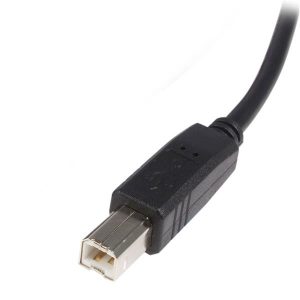 Aaron didn’t have the cable necessary to connect the dongle to a computer. He would have to go back to the office to get one. Of course why he was sent out to reprogram a wheelchair and didn’t have the proper cable is a question we never answered. Anyway I had seen such cables online during my research. They had USB on one end but I didn’t know what they had on the other end. I presumed it was some sort of weird connector like the one you can see in the photo that connects all of the various parts of the R-net wheelchair control system. Then I happen to see the end of the dongle and immediately recognized the jack was a standard USB “A” style jack. These are the full-size square USB jacks that you find on some computer printers and scanners. They were the original USB before they made micro and mini USB jacks. I said “is that where you plug in the computer cable?” And he said yes. I’ve got a whole box of those and every other kind of USB cable you can think of. I also had plenty of computers available and I knew where to find the software we needed online.
Aaron didn’t have the cable necessary to connect the dongle to a computer. He would have to go back to the office to get one. Of course why he was sent out to reprogram a wheelchair and didn’t have the proper cable is a question we never answered. Anyway I had seen such cables online during my research. They had USB on one end but I didn’t know what they had on the other end. I presumed it was some sort of weird connector like the one you can see in the photo that connects all of the various parts of the R-net wheelchair control system. Then I happen to see the end of the dongle and immediately recognized the jack was a standard USB “A” style jack. These are the full-size square USB jacks that you find on some computer printers and scanners. They were the original USB before they made micro and mini USB jacks. I said “is that where you plug in the computer cable?” And he said yes. I’ve got a whole box of those and every other kind of USB cable you can think of. I also had plenty of computers available and I knew where to find the software we needed online.
As it turned out he did have his own laptop with the proper software already installed. I provided the cable and we hooked it up. The software didn’t see my wheelchair as being connected. When you would plug the USB cable in, windows would make the usual noise that you hear when you plug a USB device into a Windows PC. But the software had a status window that said “no connection”. We made another call to Sunrise Medical Support and went through the same two-step waiting on hold process that we had been through previously. One of the problems was that Aaron wasn’t that familiar with the software and thought perhaps there was something he should have been clicking on to get it to connect. We finally got through to the support guy and explained the problem. We were doing everything right so it had to be a driver problem.
Before the guy on the phone could explain what to do about drivers I said “I’ve got this”. I instructed Aaron how to call up the Windows Device Manager window and sure enough under USB devices was “R-net Dongle” with a little yellow triangle next to it. I told him to right-click on it and it said “this device is not operating properly”. No shit. I had him click on the “Update Driver” button and it asked did we want to specify where to look or have it look online itself. If I had to bet money on it I thought we would have to go to a website to find the proper driver and install it ourselves. For such an obscure device I didn’t think it would do an automatic update but I figured we would give it a try. Meanwhile the guy on the phone was trying to figure out where to tell us to go to download the driver when much to everyone’s surprise the computer said “Installing new driver”. A minute or two later it completed. We went back to the software and sure enough it said “connected”!
Then the guy on the phone walked Aaron through what to click on to reset the factory defaults. That all went very smoothly and when it was done, the joystick worked perfectly. I asked Aaron if we needed to calibrate this joystick and he didn’t think that we needed to. At some point I’m going to get ambitious and go through the joystick calibration procedure in the manual but for now the joystick seemed to be working. We put my newly 3-D printed homemade collar around my neck and at 3:50 PM on Monday April 18 I finally got to drive my wheelchair for the first time. Here is a video I shot a few minutes later after Aaron left.
It was 328 days since the salesman and I first began working on the purchase of a new wheelchair and I finally was able to drive it. As I said in the beginning, it had also been three weeks to the day since the chair had arrived as well.
Happy Birthday to Us
Not only was April 18 the first day I could drive my wheelchair, it also happened to be my dad’s 82nd birthday. It felt like a double birthday to me. Normally we would go out to dinner to celebrate but we weren’t yet ready to have the wheelchair in the van so we decided to get carryout from the Golden Corral Buffet. It’s an all-you-can-eat buffet but neither dad nor I have a big enough appetite to make it worth the money. You can however go in and fill up Styrofoam containers with food and then they weigh it and charge you by the ounce. He can fill up a couple of containers with enough food for both of us and the cost turns out to be barely over half of what it would cost if we both went into the restaurant in the all-you-can-eat system.
My favorite is their rotisserie chicken. I think they must brine it before cooking or something to get the flavor of the spices to soak in. I absolutely love it. I have a lot of trouble eating skin whether it is fried or baked chicken and a lot of the time that’s where all the flavor is. But here the flavor goes all through. Unfortunately this particular day they didn’t have the rotisserie chicken so dad just got me a slice of pizza, some large steak fries and a large brownie.
While dad was going to get the food, I put together the YouTube video of me driving the chair that is embedded above here. While he was gone I also just drove the chair all over the house. I almost felt like dancing so I put on some music. I didn’t exactly drive in time with the music but I just wanted to celebrate a kind of birthday of my own. It was the rebirth of my mobility.
What’s Skew?
We had discovered that when I go into the van it’s too difficult for me to lean forward to duck in the doorway like I previously did in my old chair. I sit about an inch or so higher in this chair than in the old one and I just can’t duck far enough. We had discovered however that if you remove the headrest and I tilt my head backwards, I could just barely make it into the van. I have to be perfectly centered however because on the right side there is a brace on the lift on which I could hit my head. When I lean my head back, my neck hits of the top of the backrest of the wheelchair. If we could lower the backrest slightly, I would be able to tilt my head back further.
I had originally anticipated that to get in the van I would simply recline the wheelchair and not have to worry about ducking. However the process of reclining isn’t quite as straightforward as I hoped it would be. You switch the chair out of driving mode into seat positioning mode and then you have to select which seat function you want to adjust. You have to select whether it is recline, tilt, combination of both, or footrest adjustments. In broad daylight the LCD display screen washes out and you can’t see what you’re doing. Also in order to recline we need to adjust my seatbelts because as I start to lean back, my chest belt tries to tighten up on me. It was just more complicated than we had hoped. Taking out the headrest, laying my head back, driving in, and putting the headrest back in place seemed a lot simpler. But to make it safer we really want to lower the backrest so I could lean my head back further.
One of the things that makes this chair so complicated is that it is so adjustable. It used to be they made wheelchairs in perhaps two sizes and then it was up to you to come up with cushions or padding to make you fit the chair. These days the chairs are insanely adjustable and that along with the tilt and recline mechanisms it makes them insanely complicated.
There is a procedure in the user manual that shows you how to remount the backrest into a lower mounting hole. We had talked to Aaron about the possibility but he said it couldn’t be done in my case because it would mess up the skew mechanism. That left me with a question “What’s skew?” (To which the comedian in me would reply “Nothing… What’s skew with you?”)
The reclining mechanism is quite complicated in that it has 2 actuator motors. One of them does the actual reclining. The other one slides the backrest down slightly as you recline. That keeps the backrest stationary relative to your back as you lean backwards. I would have to create a complicated animated illustration to fully explain why it does that and at this point of the story we really weren’t sure how or why it worked. It is this second sliding mechanism that is known as the skew mechanism. When they delivered the wheelchair it had a backrest cushion that reached all the way down to the seat. We concluded that it was this tall cushion that was the reason he said it could skew properly. We had already replaced it with a shorter backrest cushion that had plenty of room to slide up and down. There was another set of mounting holes that would allow us to lower the seat. It might’ve been just as easy to get out the sawzall and cut an inch off the top but you hate to do that if there is an adjustment that will work. Also we weren’t really sure we needed it. I did fit through the door. It just didn’t have any margin for error. We also still had the option to simply recline the chair. The skew mechanism turned out to be one of the reasons why the safety belt was messing up during reclining. Perhaps reclining was a better solution after all. We later found a way to remount the safety belt so that it didn’t get affected by the skew.
As you have probably seen after reading these blogs or my recent essay on my choking and swallowing difficulties, I have a tendency to tell every single detail of any story. But I’m going to spare you some of gory details of this one. The short version is that dad tried to follow the procedures of the manual to disconnect the actuator, disconnect the seat hinge, reposition the seat hinge, and reconnect the actuator all in a lower position. He started working on it the evening of the 18th after I was in bed. He spent hours trying to do it that night and the next morning. We finally had to give up and put things back the way they were. That is almost…
On paper, the process seems pretty simple but in addition to the hinge and the recline actuator that need to be moved, there is a gas filled cylinder that looks like a shock absorber but is actually a very stiff compression spring. He could not get the spring compressed sufficiently to get it connected the proper hole. When he gave up and put it all back together, the spring was one hole lower than it should’ve been. It simply would not go back in the proper hole. The mechanism still seemed to work smoothly after he put it back together so we just gave up on it.
The Tortoise Beat the Hare
I had a sleepless night that night. Part of it was excitement over the day’s events. Part of it was the noise of dad banging on the bolt trying to get it back in as he was adjusting wheelchair 🙂 Anyway I slept in until 1 PM on Tuesday. We canceled the home health aide and dad got me dressed and I had a small snack about 2:30 rather than eating lunch. As he was stressing me, dad explained everything was back together but a new problem had arisen.
The chair wouldn’t drive except at the lowest speed. A little orange icon in the shape of a tortoise had popped up on the LCD display. The speed control shows icons of either a tortoise on one end or a hare on the other end. Apparently those are the new universal symbols for slow or fast. If you would set the recline angle of the chair up 100% vertical, the tortoise would disappear and you could drive at any speed you wanted to. But if you recline even a couple of degrees, the tortoise would pop up and you would be limited to the lowest speed setting.
Is a safety mechanism to keep you from driving the chair rapidly while in a reclined position. If you recline very far, the tortoise turns red and you cannot drive at all. We had seen it before but it usually didn’t kick in until 20-30 degrees or so. However my comfortable seating position is about 5 degrees reclined. Something that we had done along the way had messed up this mechanism.
So in this little fable my dad and I have been the hares. A couple of weeks ago I had rushed like a jack rabbit into changing the programming and messed things up. Dad had rushed into the mechanical adjustments and apparently messed things up as well. And we were now being beaten by a damn little tortoise icon. I guess the Aesop fable was right. The tortoise beat the hares again.
Is an earlier installment I had described my dad and I were like Liam Neeson in the “Taken” movies who were dangerous because we “possessed a particular set of skills”. As it turns out we both should’ve been listening to another deep-voiced badass movie character Clint Eastwood in the second “Dirty Harry” movie when he famously said “A man’s it got to know his limitations.” Or perhaps it was like Tom Cruise in “Top Gun” getting chewed out by his commander Stinger when he said “Son, your ego is writing checks your body can’t cash.” Whatever fable or movie was appropriate to the situation, the score was even. Dad and I had both screwed up.
Actually at this point we weren’t completely sure that he had done anything wrong. We had unfortunately violated my mother’s proverb that I spoke of earlier about “don’t feed the baby 2 new foods”. There was a possibility that resetting the software that we had done with Aaron earlier in the day had reset the calibration of the tilt sensor. I was pretty sure that the chair had been driving normal speed when I drove it around that evening but we really weren’t sure whether it was the software reset or the change of the mechanics that was the root of the problem.
I sent an email to Aaron and I also posted messages on the wheelchairdriver.com discussion forum. The people online said that the sensors are pretty flaky and have been known to give out at inappropriate times such as when you are a mile from home and suddenly your wheelchair starts going a tortoise pace because it thinks you are reclined when you are not. The bottom line from them was it could be software or it could be hardware they couldn’t tell for sure.
Rather than tell the remainder of this story chronologically day-by-day as I have been doing, I’m going to finish out this topic because we did not get this resolved until eight days later on Tuesday April 26.
The email reply I got from Aaron basically said what everyone else had said. It could be software… it could be hardware… he didn’t know. So I wrote back and said “So what do I do to resolve this?” I never heard back from him. I spent a lot of time over the next several days trying to research how the sensor works, where it’s located, does the software calibrate it? I tried sending email to Sunrise Medical who manufactures the chair. Experience had shown me that Aaron couldn’t do anything without calling them. Maybe I could get some answers directly. I did get an initial reply. They said they needed to know the serial number on my wheelchair before they can answer any more questions. I sent it to them with more information about the problem. I never got a reply.
On Monday April 25th we finally called National Seating and Mobility to get them to officially send Aaron or some other technician out to look at it. Apparently he wasn’t going to reply to my emails unless I got his office involved. They gave me the same story of either bring it in or wait another week until we can send someone. Rather than wait another week dad took it in the following day. They tried a couple of different things to no avail but eventually went back to work on putting the spring cylinder back into its proper hole. It took two guys to do it which was why my dad had spent so many hours trying to do it himself. For some bizarre reason it fixed the problem. The technicians couldn’t believe that that was the problem and neither could we. There’s nothing electronic connected to that cylinder. There must be some sort of pressure sensor in the actuator motor that could tell that the spring was not set properly and that was messing things up.
During the entire week that the speed control was messed up, I chose not to drive the chair myself. It was too difficult to drive at that speed and I was having some other issues with my joystick mount that I will describe later. So even though I did get to drive the chair for a single day three weeks after its arrival. I did not really have the chair fully operational until exactly 4 weeks and one day after its arrival.
In the end, the seat was back where it was originally and all of that adjustment was for nothing. And for reasons which I will explain later… I’m still going to have to recline the wheelchair to get in the van. All of that adjustment was for nothing. The reasons why I have to recline is a story for an entirely different blog.
Showing Off

Adafruit Show-and-Tell sticker I earned for this presentation.
Despite the fact that the tortoise had sent this hare sadly strolling away with his tail between his legs, I want to celebrate and show off that the chair was working even if it wasn’t completely up to speed. Every Wednesday night my maker supplier Adafruit Industries has a weekly online video chat where people show off their electronics and other maker projects. A few weeks earlier I had shown them a sort of work in progress version of my joystick mount. That was back when we were just making modifications to the mount that had the cloth strap. This was the new completely redesigned built from scratch system. And rather than just show a slideshow of pictures, this time I could actually demonstrate the project myself. I was going to drive my wheelchair live on the Internet for hundreds to see.
I did some tests to see what would be visible on my WebCam. I could park in front of the camera and then back up the chair and do some small maneuvers and then pull up to the computer again. The demonstration went really well and they were impressed. One of the hosts of the show Phil Torrone was very impressed. He said that so many of the 3-D printer projects that they encounter are somewhat trivial trinkets. They are typically little knickknacks or toys or perhaps they are just enclosures for electronics projects. Indeed that’s the majority of what I’ve done with my 3-D printer. However this was a project that really did something useful that would be difficult to do without a 3-D printer. The fact that the commercially made devices would not meet my specific needs but that I could create something with a 3-D printer was a much better illustration of what 3-D printing was all about.
The guy who presented after me also had an inspiring project to show. He was getting treatment for a brain tumor and he has some sort of electronic device wired into a cap that he had to wear on his head. The electronics were stored in a backpack. For various reasons from time to time he would shut the device off but he would occasionally forget to turn it back on again. There was a little blue light that would be on anytime that the device was operational. He built an electronic gadget with a color light sensor that would detect whether or not the light was on. If it was off for too long of a time period, it would ring an alarm. Here was an electronic medical device probably worth thousands of dollars and it didn’t have an alarm function. This guy build one himself out of parts purchased from Adafruit.
Here is the video on YouTube. My section starts at 5 minutes 10 seconds into the show. The guy with the alarm on his cancer equipment is immediately after me.
After the group show-and-tell, they also present an hour-long live streaming program called “Ask an Engineer” which includes maker news, tips, and a Q&A section where you can ask engineer and Adafruit founder Limor “Ladyada” Fried your engineering questions. But part of the “Ask an Engineer” show begins with a recap of the previous “Show-and-Tell” program. In that program they also reiterated their appreciation for my use of 3-D printing to solve a real problem. You can see the “Ask an Engineer” program here. That link takes you to the 11 minute mark where she described my project but if you bother to watch it you might want to skip ahead to about 14 minutes where they comment further. I’m writing this blog on May 3rd and as of this point the Show-and-Tell has been seen over 1000 views and the engineer show has been seen on YouTube over 2000 times. The show also streams live on periscope, twitch, u-stream and other platforms. Of course I always tell people they can visit this blog for more information.
Promoting my work on the Adafruit programs has led a number of people to contact me about my projects. I know of three or four people who were building specialized infrared remote controls for their aged or disabled friends and family. They have contacted me for advice and I’ve really enjoyed helping them with their projects. Perhaps sharing my wheelchair stories will also help other disabled people who are makers or firms of makers
I was going to continue telling the story of some design modifications that I’ve made on the joystick mount while I was waiting on the reclining problem to be fixed however I think this is a good place to wrap up this edition. In the next installment I will talk about some modifications to the joystick mount that were made during the fourth and fifth weeks of having the new wheelchair.
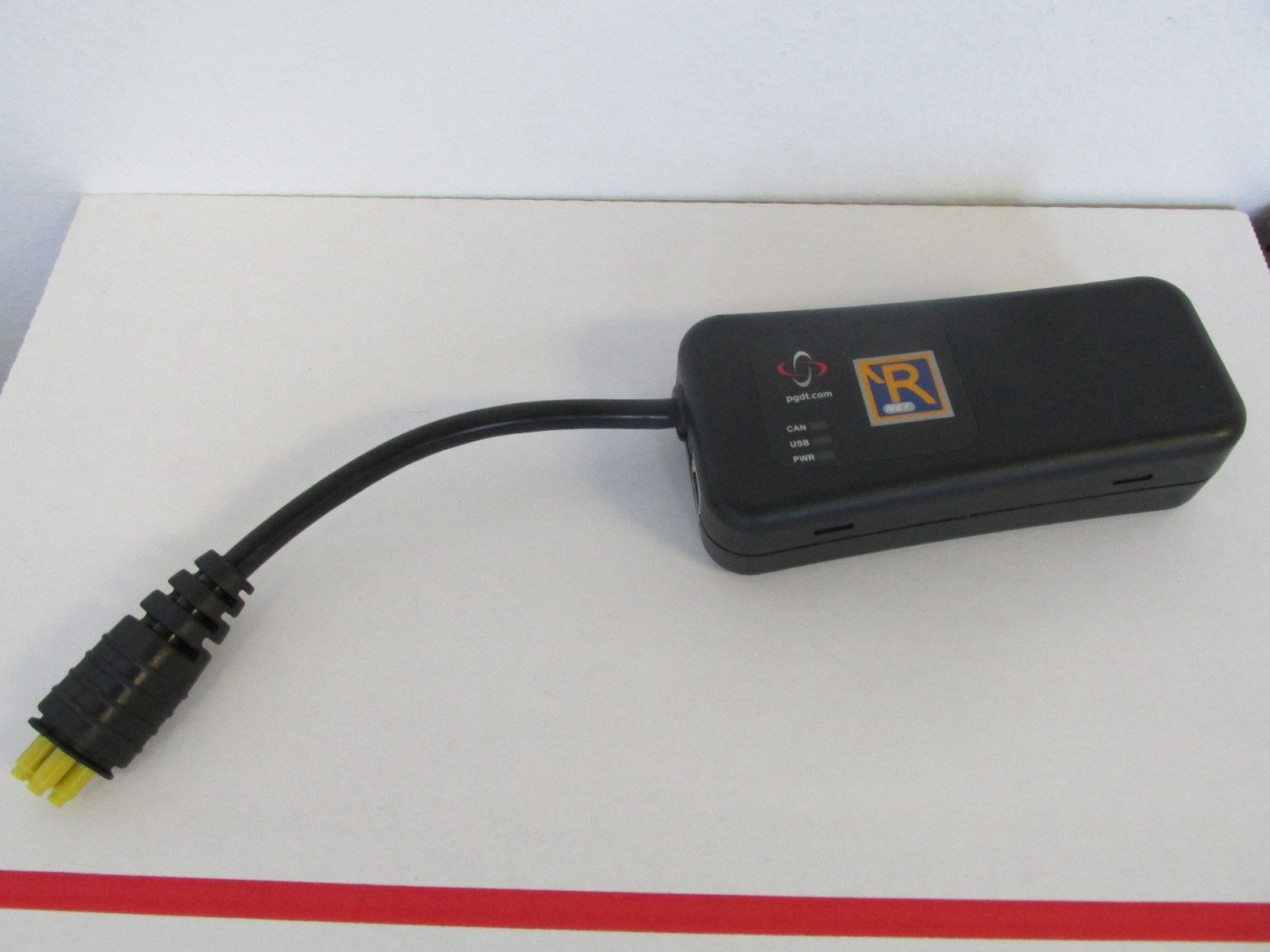
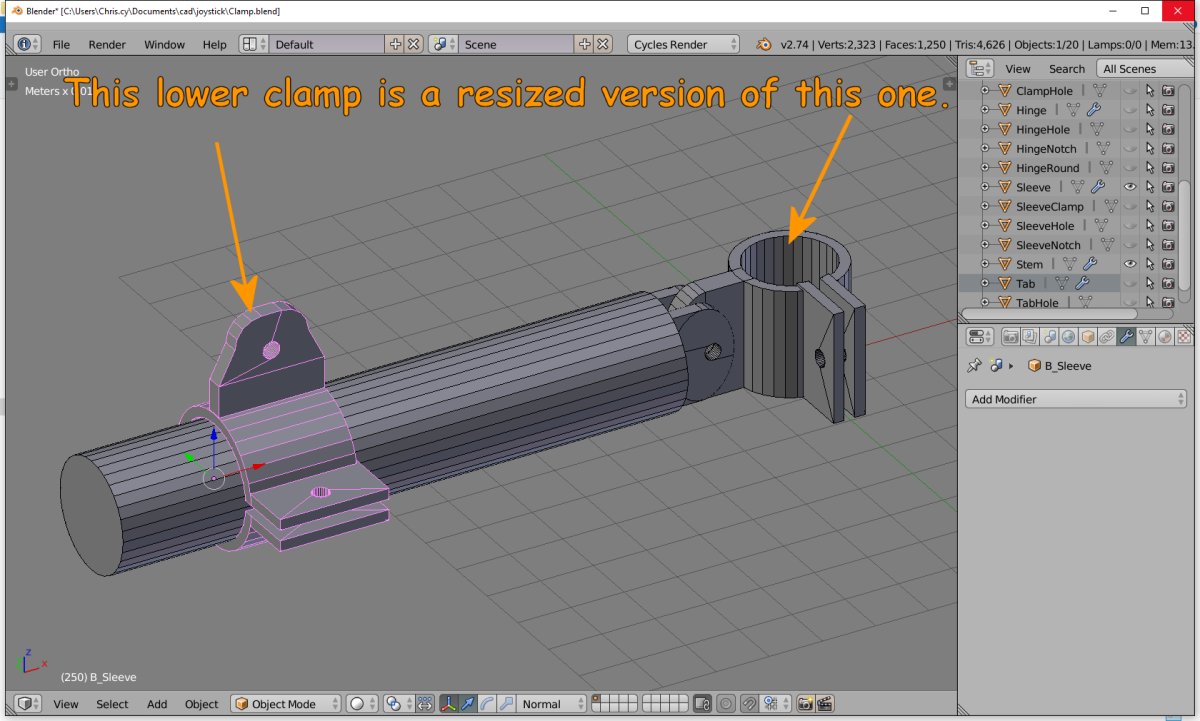
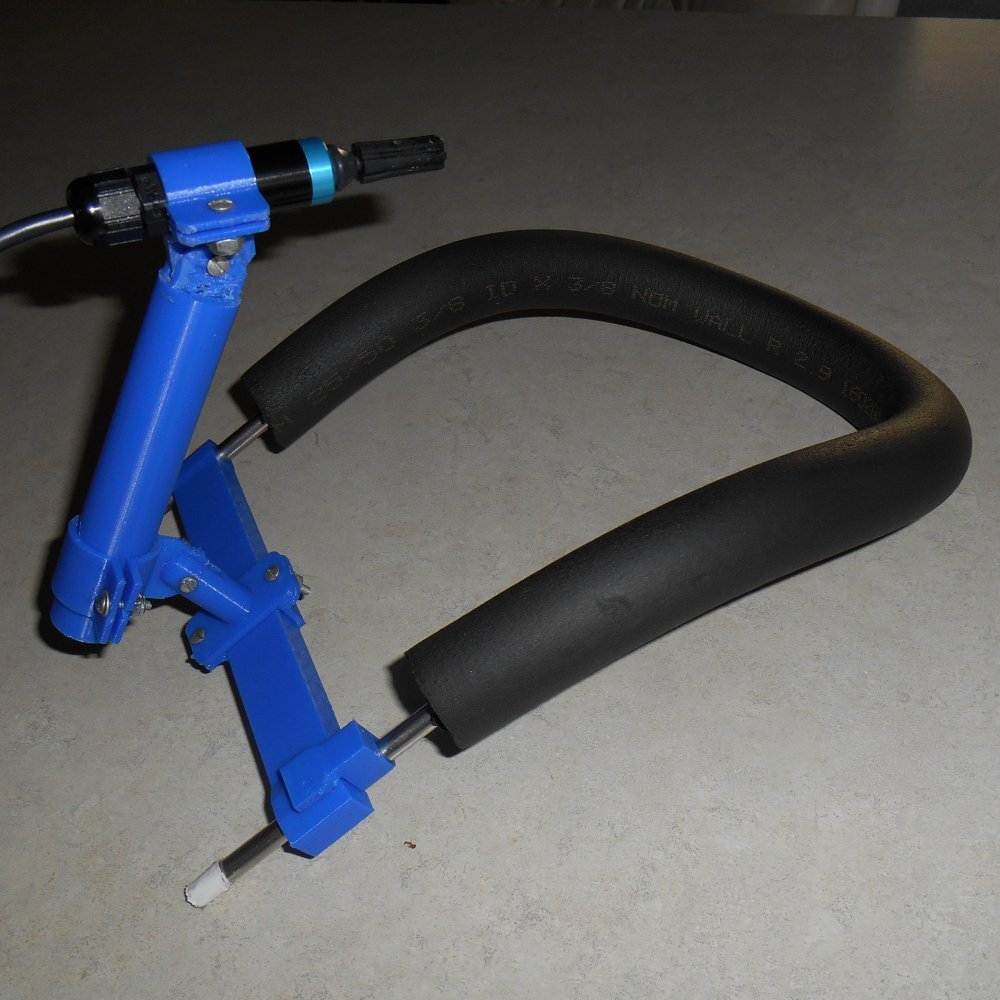
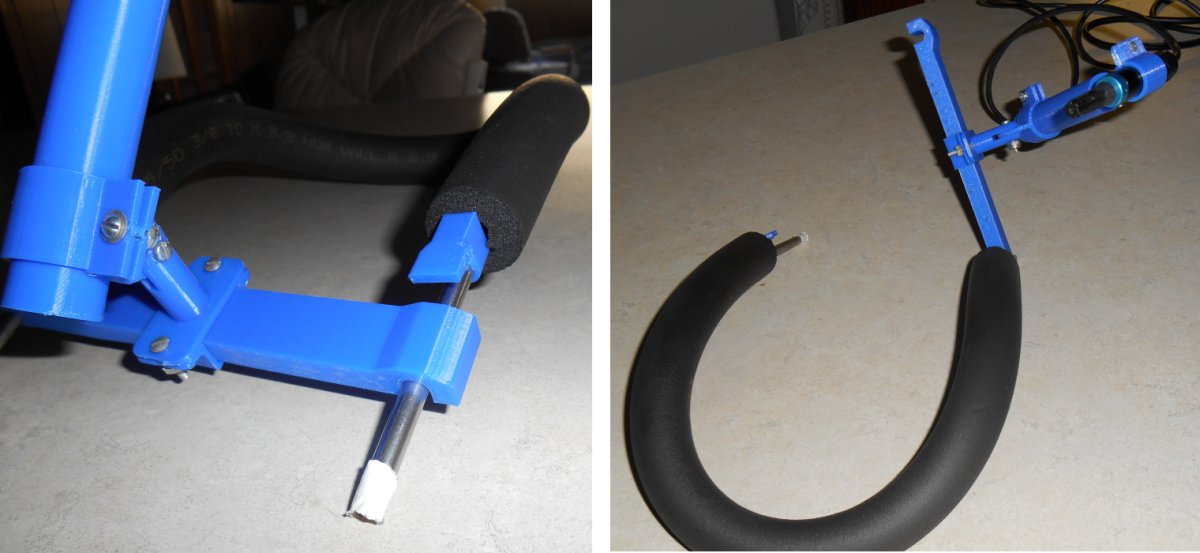
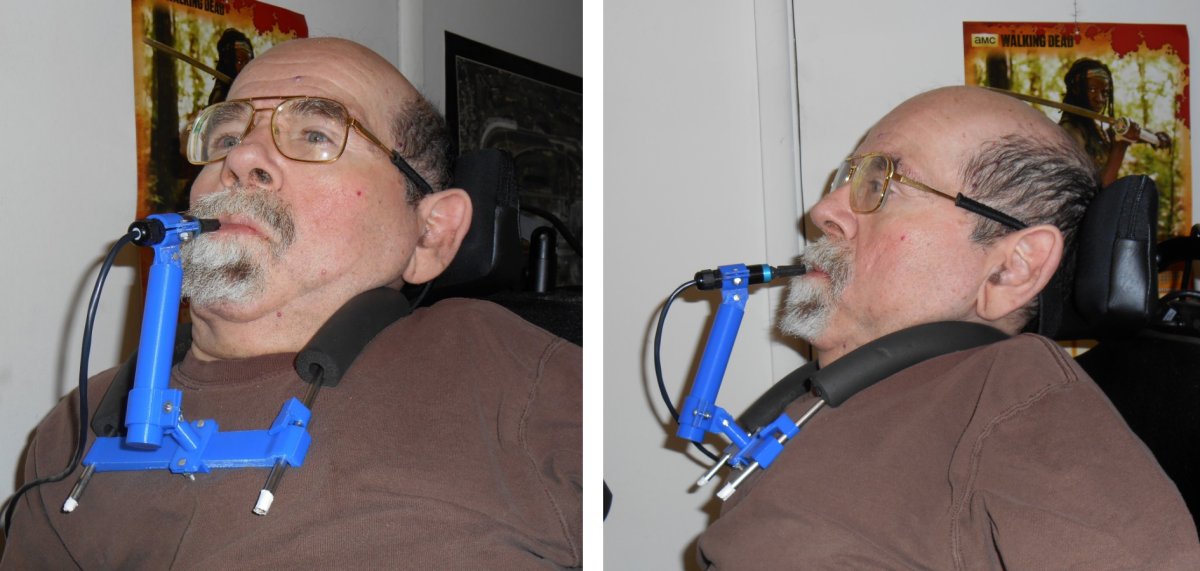
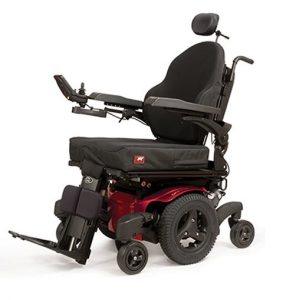
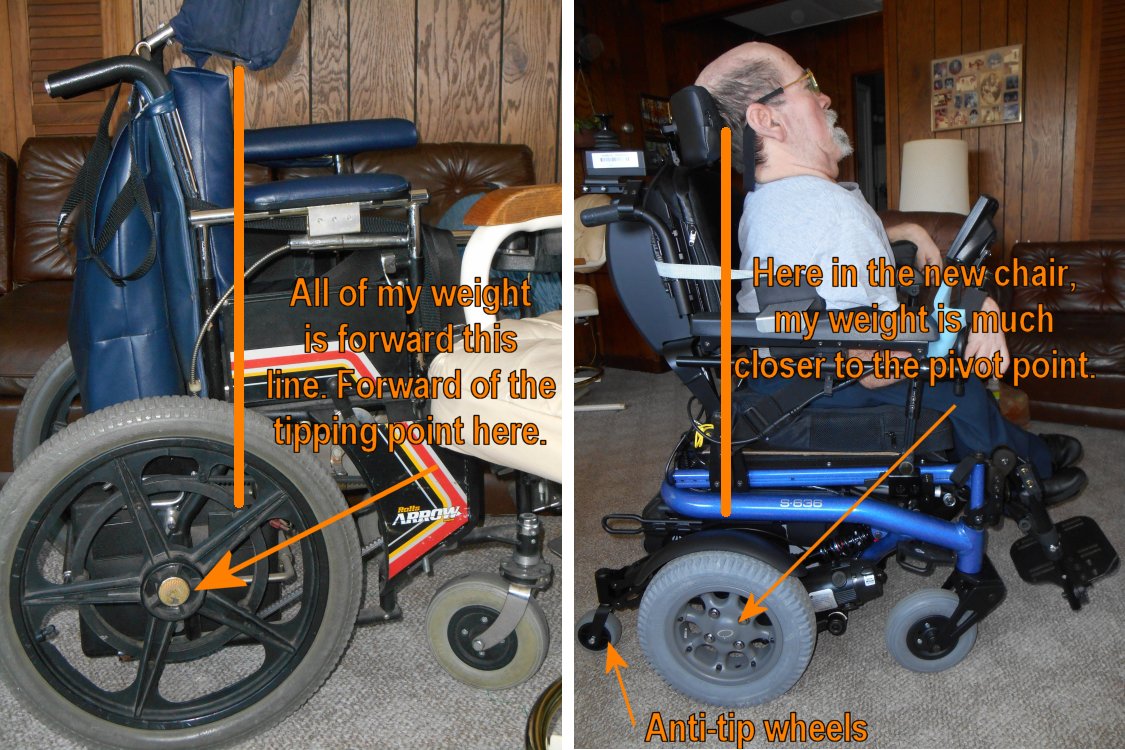
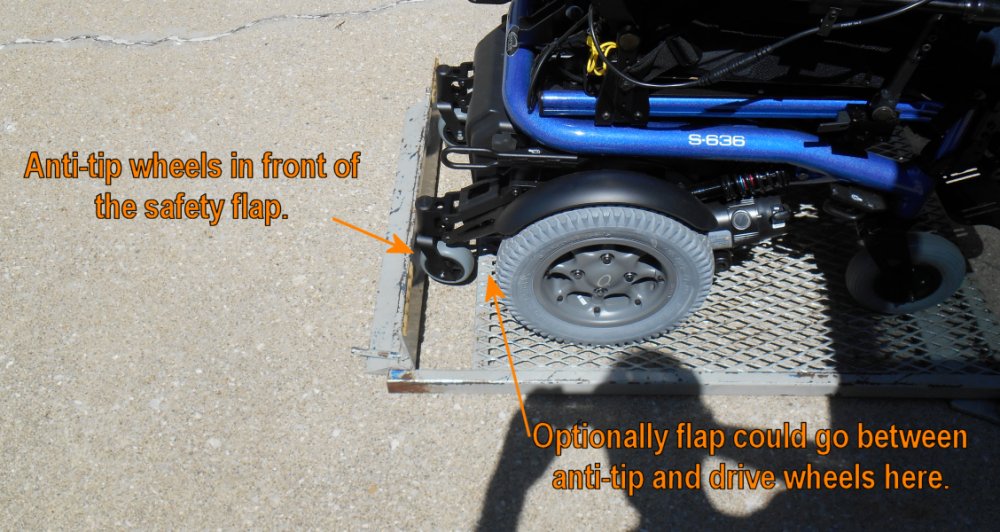
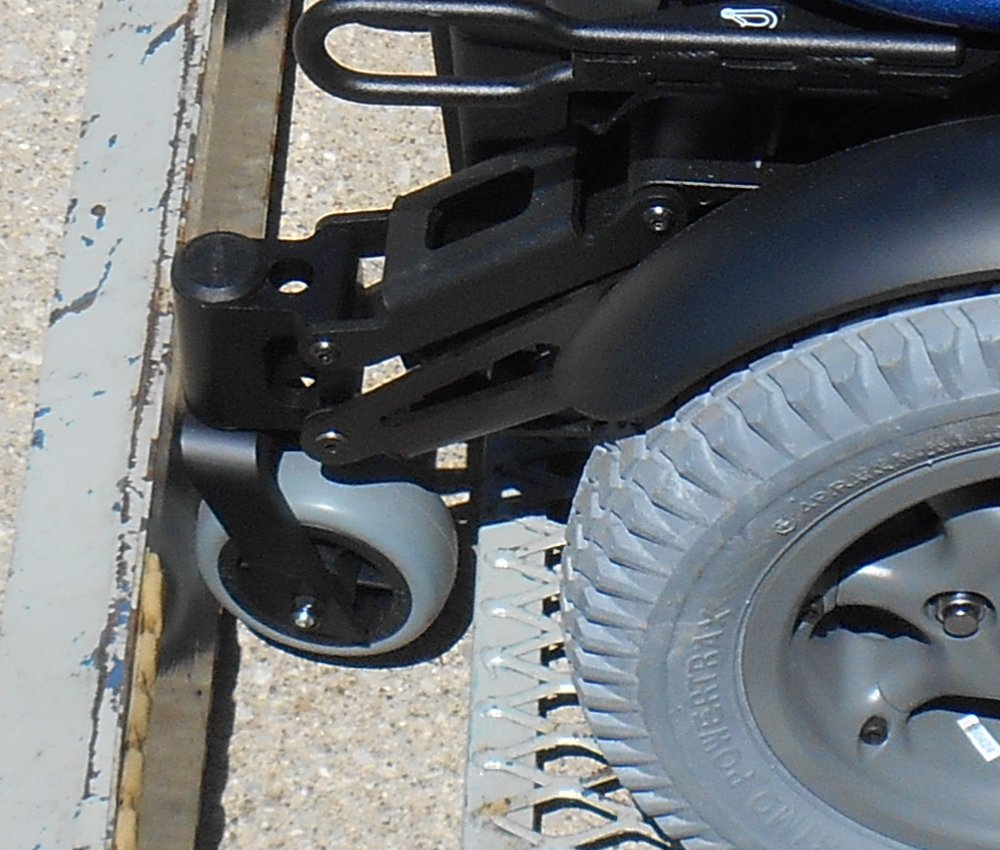 >So I got online to my new favorite go to place for all things wheelchairs, an online discussion forum at wheelchairdriver.com. I asked them if they thought it was safe to remove these wheels and what was the complicated mechanism all about.
>So I got online to my new favorite go to place for all things wheelchairs, an online discussion forum at wheelchairdriver.com. I asked them if they thought it was safe to remove these wheels and what was the complicated mechanism all about. 

